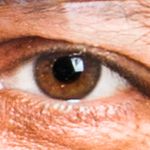Copy link to clipboard
Copied
SHARE AND DISCUSSION
*Talk and First Question
Until this second or now I sometimes think stupid, I often and try to make beautiful photos beautiful and noseless and so on, but every time I take with the camera My phone with the brand Tekno Spark 6 Go is always unsatisfactory, even every time I uploading to adobe stock there is always a different problem, I don't understand if adobe stock is really mandatory the photos must be 100 percent perfect without any defects or errors are on the Tecno Spark 6 Go which is good at making cameras, for this problem it is not solved, and how what is the solution so that the video photos that we record via cheap cellphones are always approved or accepted by Adobe Stock?
*Talk and Second Question
I record the original photo without editing it is always rejected by Adobe Stock, I make edited photos such as colorful backgrounds accepted by Adobe Stock,
even though natural photos without any changes at all but I really like natural photos rather than edited ones because the edited ones are very beautiful but that's also not original right, so my question is Adobe Stock or consumers actually want to find original photos or photos that are edited. edited or engineered
Sorry for everyone, this is not to corner you, but this is only for all of us to have a good discussion, hopefully colleagues at Adobe Stock understand it and hopefully can share and remind each other which is good to take and which is bad to be updated or updated. wake up together to be perfect, good greetings more and less once again I apologize and thank you
 1 Correct answer
1 Correct answer
Understand the limitations of your camera and work within those limits. Don't expect your 13 megapixel camera to compete with higher priced 24-30 megapixel models. It won't happen. But under ideal conditions, you can get decent results.
- Start with a simple solid object on a table. It can be anything -- fruit, beverage, toy, object d'art, whatever you like. This is a practice session.
- Illuminate the object with different light sources, natural and artificial lights.
- Take photos from diffe
Copy link to clipboard
Copied
Thank you for your question and discussion.
" I don't understand if adobe stock is really mandatory the photos must be 100 percent perfect without any defects"
Yes, that is madatory. Your photos must be world class stock photos, and meet all the other rules of Adobe. It is possible to get such photos with a good phone camera, but it is much harder, and conditions and subject must be just right. There is a reason professionals buy fancy cameras, they don't just look cool !
" even though natural photos without any changes at all "
Most photos will need some editing; it is very rare to get the photo from the camera perfect. The edits are to make the photo look perfectly natural, with balanced colours. Sometimes to improve the composition to the best possible. Never add effects or change the look. Are you checking the histogram before submitting? Are you viewing at 100% in Photoshop before submitting?
My suggestion is that you share 1-3 photos that were rejected (no more)., which you feel are absolutely perfect.
For each photo, say the reason for rejection. For each photo upload EXACTLY as submitted, do not reduce or resave the file. This is vital so the experts here can repeat the checks which Adobe do every time.
Copy link to clipboard
Copied
Yes, Adobe Stock expects technically perfect images and makes no allowance for the fact that a mobile phone camera was used. Every image is subjected to the same scrutiny by the Moderators.
as to your second question, virtually every image is not going to be technically perfect straight out of the camera and will require editing to offset technical flaws introduced by the digital camera. Such images are not more "natural" or "original". All digital cameras process images internally, so they're not necessarily close to what the eye perceives. Editing gives you the chance to modify the image to be closer to what you can perceive with your eyes - lightening the shadows, darkening the highlights, removing chromatic aberration, adjusting the white balance, removing sensor and lens spots, etc.
Copy link to clipboard
Copied
I don't understand if adobe stock is really mandatory the photos must be 100 percent perfect without any defects or errors
Yes, buyers of Adobe stock assets expect 100% error-free assets. So, the moderation team refuses all pictures with detected errors.
what is the solution so that the video photos that we record via cheap cellphones are always approved or accepted by Adobe Stock?
Check your assets beforehand at 100% and 200-300% and correct all errors you encounter. The vetting process treats all pictures equal, but it may be more difficult to get assets passing that have been taken with a small size sensor. These are physical limits, not bad will.
I record the original photo without editing it is always rejected by Adobe Stock, I make edited photos such as colorful backgrounds accepted by Adobe Stock (...)
I suppose you need to correct the exposure and sharpness and noise in your background. Without seeing the picture, we can't really check what is needed.
even though natural photos without any changes at all but I really like natural photos rather than edited ones because the edited ones are very beautiful but that's also not original right, so my question is Adobe Stock or consumers actually want to find original photos or photos that are edited. edited or engineered
By @azukiajorka.354725
If you take a picture and let the in-camera program processing your image, it gets edited. Only when you get a raw image, you get the data read from the chip. This data, however, is unusable, even on the most expensive and best camera of the world. That is, why we process images in a certain way, to give them a natural, equilibrated, technically correct look.
You're welcome.
Copy link to clipboard
Copied
Regarding your question about editing, it is needed. Cloning out unwanted objects such as logos, or unwanted distracting elements. When it come to post processing one can edit or enhance a photo. Enhancing is more about changing the exposure, increasing/decreasing shadows, recovering highlights etc.
Even in the darkroom days a lot of editing/enhancing was done in the darkroom.
Copy link to clipboard
Copied
It's important to remember that cell phone manufacturers embellish the abilities of their cameras. There is a lot of marketing fluff in there. The truth is that cellphones just aren't great tools for technically proficient stock photography. The physical size of the sensor is much smaller than dslr's and there are many limitations such as not being able to control the aperture.
Although Adobe does accept cell phone photos, it's just more challenging to overcome the technical hurdles.
Photos are either edited by your camera or by you. A raw file is the sensor data before any editing is applied and meant to go through the digital darkroom. It's like taking film to a 1 hour photo or doing the dark room work yourself. You can get much better results with an actual darkroom, and the same is with a digital darkroom. I've never viewed editing a photo as "cheating", but rather one of many steps to creating a compelling photograph. Many natural looking photos are actually blended and edited, it's just not obvious.
I've also never been a fan of the word "original" because we all experience the world in a different way. We will all think the sky is a different shade of blue, or how green grass really is. That's the fun thing about photography, is that you get to show people how you see the world.
Copy link to clipboard
Copied
I've also never been a fan of the word "original" because we all experience the world in a different way.
By @George_F
If you want to do photography like the professionals, look at the National Geographic requirements. That is what is allowed to edit in your pictures, and what at least needs to be done to get great pictures. For stock, however, you may, or you sometimes need to be more radical.
Copy link to clipboard
Copied
Understand the limitations of your camera and work within those limits. Don't expect your 13 megapixel camera to compete with higher priced 24-30 megapixel models. It won't happen. But under ideal conditions, you can get decent results.
- Start with a simple solid object on a table. It can be anything -- fruit, beverage, toy, object d'art, whatever you like. This is a practice session.
- Illuminate the object with different light sources, natural and artificial lights.
- Take photos from different distances and angles -- overhead, 3/4, straight on, low-angle.
- Experiement with different camera settings, use manual settings if you have them.
- Take notes.
- Open up the images in Photoshop or Lightroom and examine each one at 100-300% magnification.
- Select your best images. Fix defects if you can, discard the ones you can't.
- You learn more from your mistakes than you do from your successes.
- Enjoy the process. That's how you learn.
If you're serious about photography, start saving for a good entry level DSLR camera (new or used) and a couple of good lenses.
https://photographylife.com/best-entry-level-dslrs
Copy link to clipboard
Copied
If you're serious about photography, start saving for a good entry level DSLR camera (new or used) and a couple of good lenses.
https://photographylife.com/best-entry-level-dslrs
By @Nancy OShea
To add to this, if you want to save some money, wait for the new model of your most wanted camera to come out and then buy the previous model as a used camera. Make sure that you buy, however, from a trusted source.
Copy link to clipboard
Copied
- Thank you Nancy O'Shea, the answer is very concise and also builds on my style. You speak best regards Nancy O'Shea, and thank you also to all Adobe Stock colleagues who have shared the good with me, hmm, I didn't expect this many comments I'm sorry I made everything, I can't reply to all of your comments, all of them are one, one, but I've read all of your comments, it's nice to have a team like you
Copy link to clipboard
Copied
If you are new to stock, you should consider these resources: https://helpx.adobe.com/stock/contributor/tutorials.html
Please read the contributor user manual for more information on Adobe stock contributions: https://helpx.adobe.com/stock/contributor/user-guide.html
See here for rejection reasons: https://helpx.adobe.com/stock/contributor/help/reasons-for-content-rejection.html
and especially quality and technical issues: https://helpx.adobe.com/stock/contributor/help/quality-and-technical-issues.html
Get ready! An upgraded Adobe Community experience is coming in January.
Learn more



